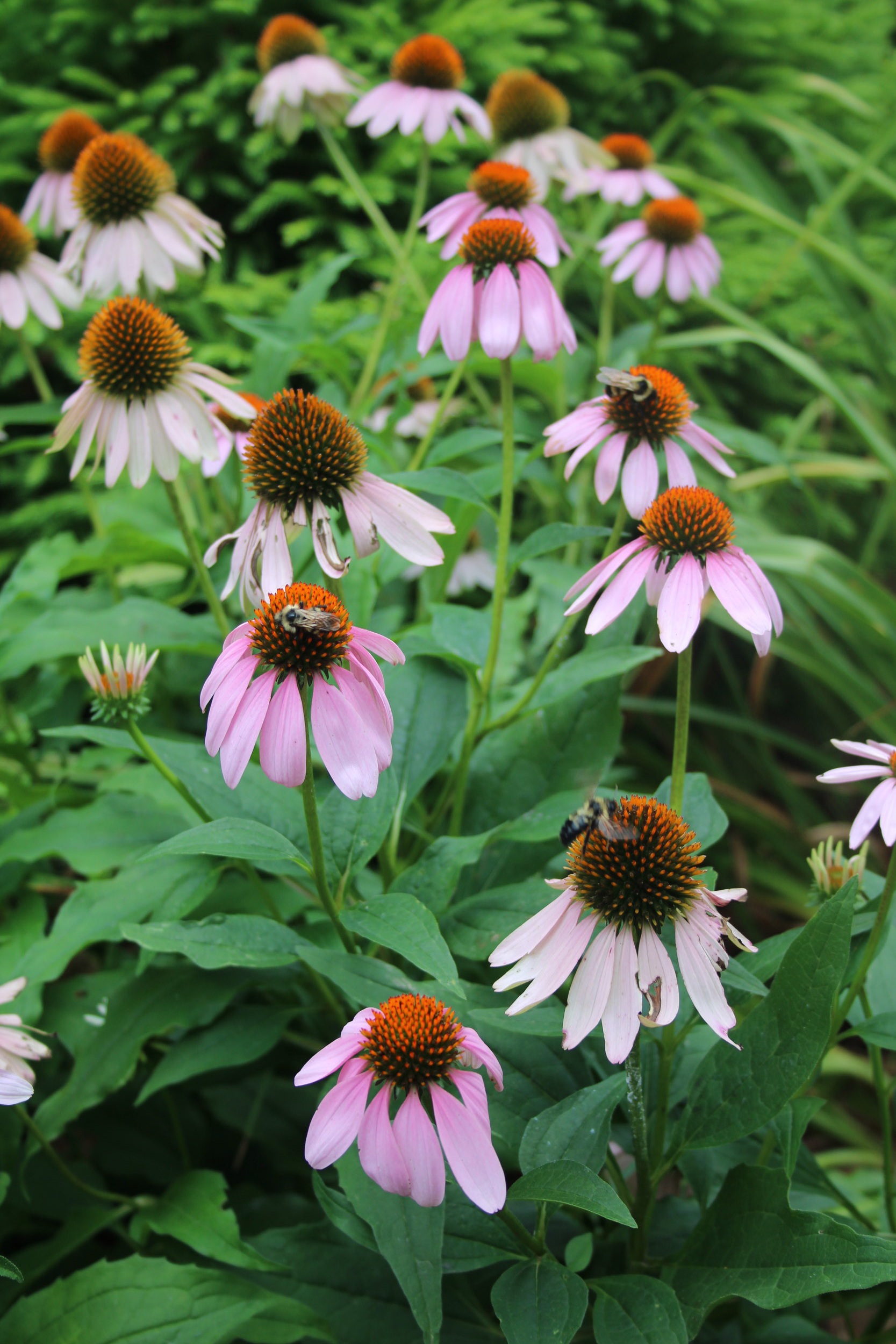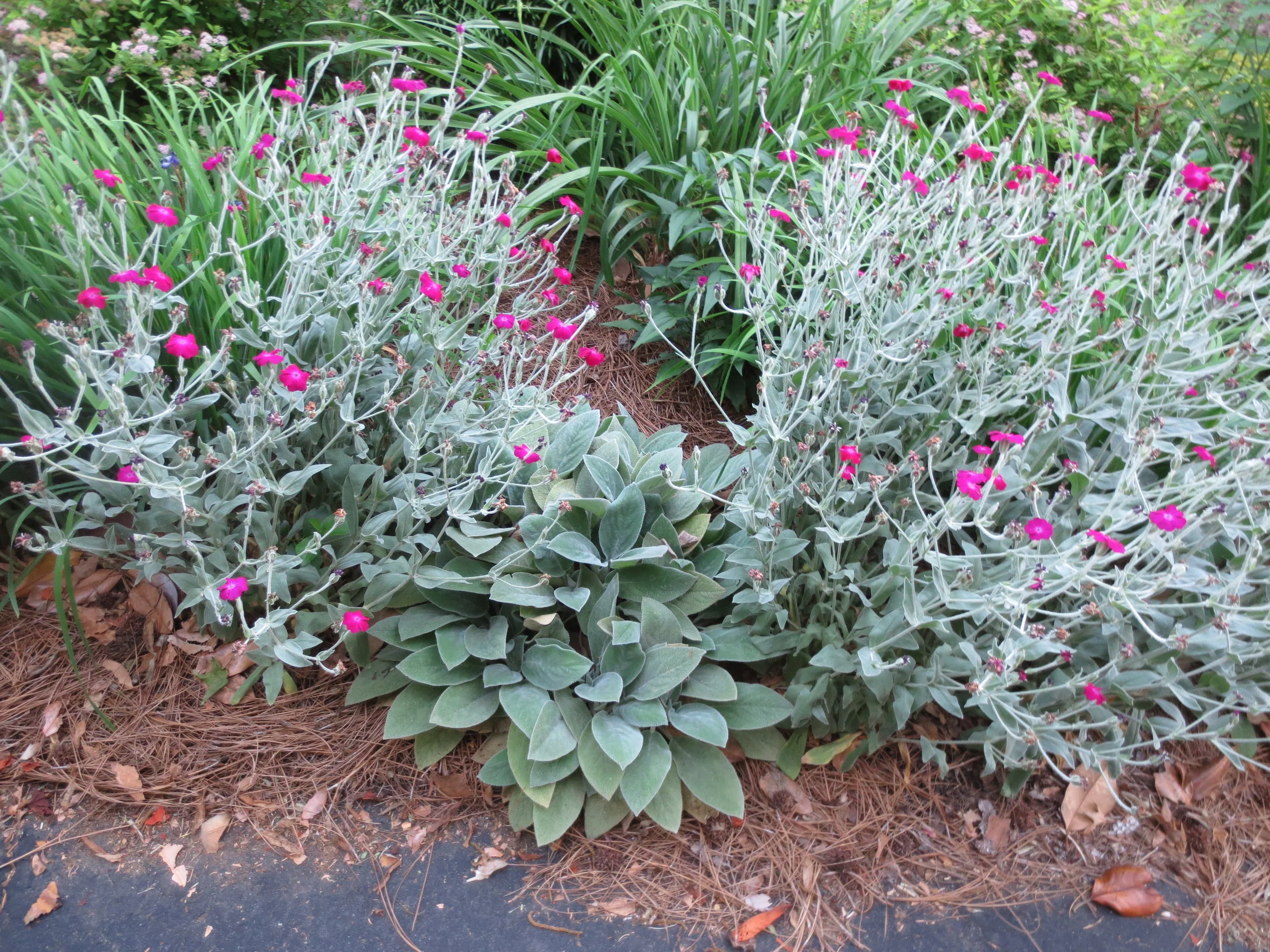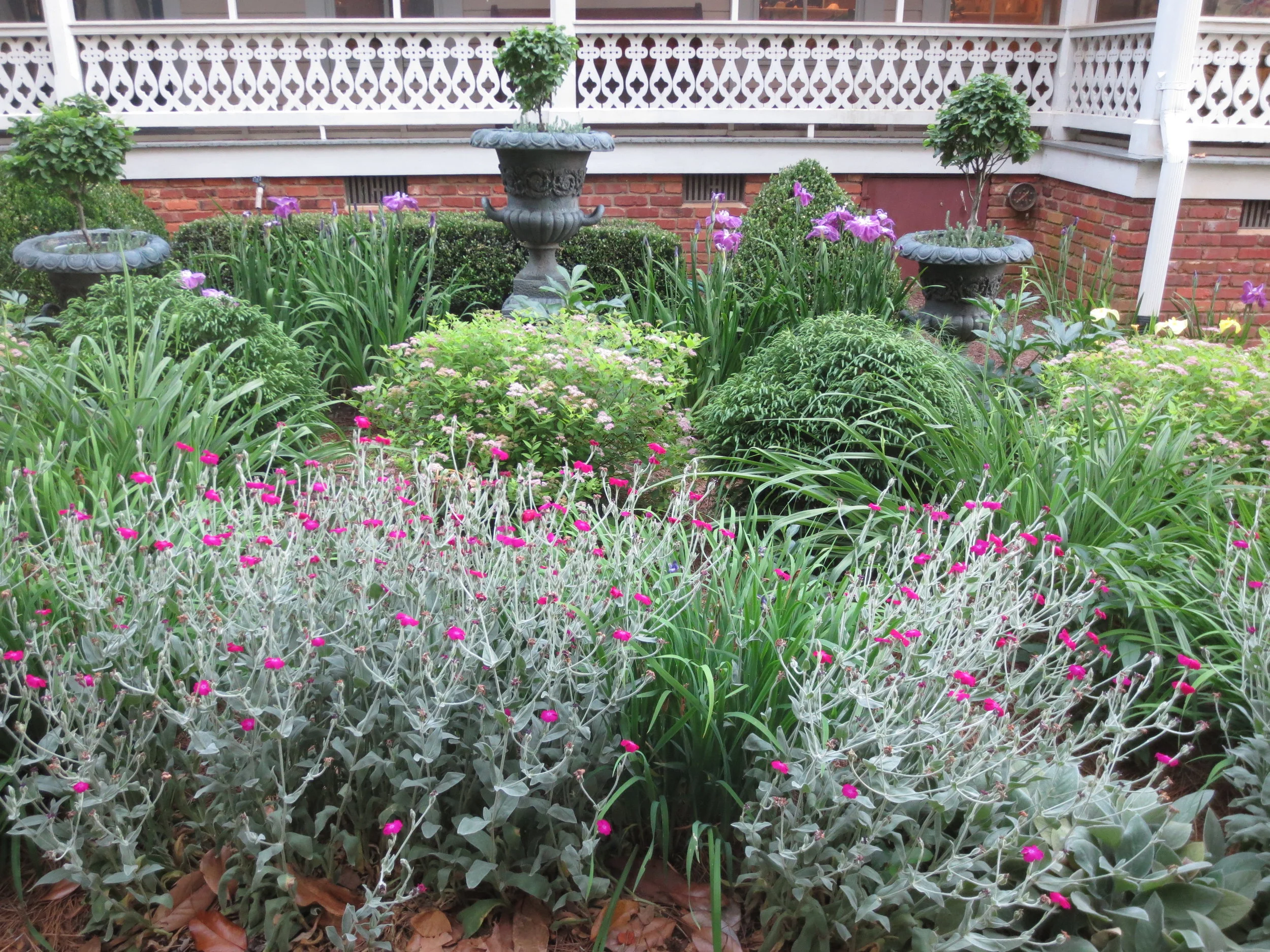I’ve never met a Salvia that I didn’t like, and Salvia guaranitica ‘Black and Blue’ is at the top of the favorites list. They typically start blooming around Father’s Day in my zone 7b garden. To the delight of my hummingbirds, they opened much earlier this year (first blooms on May 8). The hummers ignore the feeders to sip nectar from the cobalt-blue blooms with black calyxes.
The Black and Blue specimen in the Mary Snoddy garden arrived as a 4-inch pot from the local nursery more than ten years ago. The first year was just okay, but the following years it flourished. The plant has spread by rhizomes and is now more than six feet across after numerous divisions. I have moved pieces to several locations throughout the grounds and given away countless divisions. It shows best when planted in masses rather than singles.
This is the tallest Salvia in the Snoddy garden, reaching five feet or more. It is an ideal candidate for the back of the flowerbeds. In the hottest part of the year (August), it usually takes a break from flowering. At that time, I use an electric hedge trimmer to cut it back to two feet. I give it a booster of liquid fertilizer after pruning and it rapidly regenerates and will bloom again about four weeks later. Flowering continues all the way to freezing weather. The top growth dies to the ground in winter and should be removed. Plants are perennial in zones 7 to 10, but can be grown as annuals in cooler areas. In zone 7, it is best to protect your dormant plants with a light winter mulch like pine needles.
Black and Blue is an easy plant to grow in full sun, with little to no supplemental irrigation. Oddly, several recipients of my divisions have reported failures after transplanting. I potted up a three-gallon container earlier this year, and for the first few weeks, I thought it was a goner. The top growth turned black and died. In the last week, it has regenerated from the roots and looks healthy. Perhaps it just resents disturbance. Black and Blue has the square stems typical of members of the mint family and is easily propagated by cuttings. I have rooted cuttings in both soil and water with equal success.
During its first year, Black and Blue grows thick, knotty rhizomes that resemble black fingerling potatoes. These underground storage chambers allow the plant to survive long periods of drought. Once established, it is truly a fuggedaboutit plant. Deer ignore it and the pollinators love it.
A honeybee visiting ‘Black and Blue’ Salvia
A large clump of ‘Black and Blue’ Salvia, begging for division.











